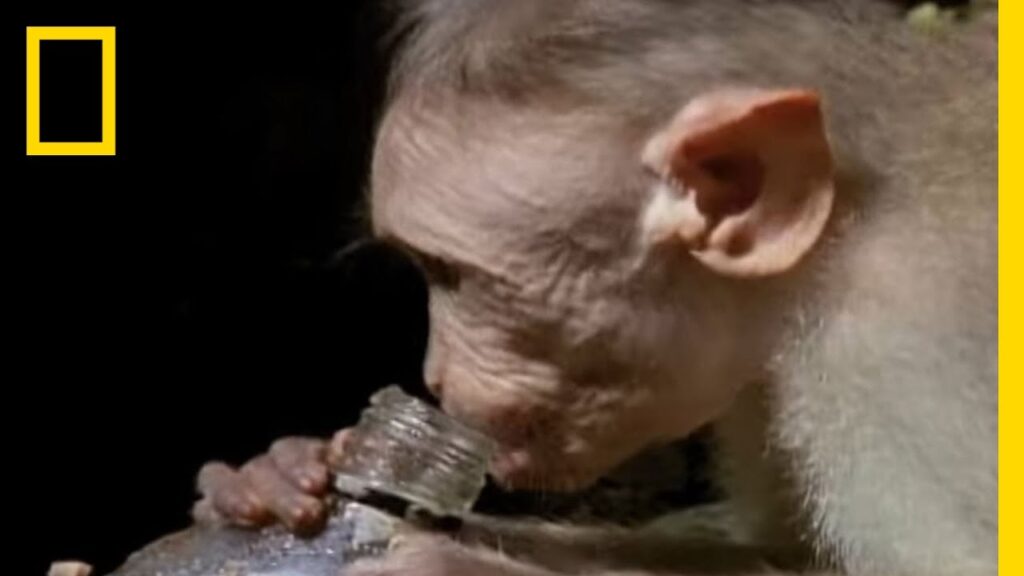
National Geographic researchers discovered that these monkeys’ love for alcohol isn’t random. It is tied to evolutionary history. Many wild primates naturally consume ripe, fermented fruits in the forest. When fruits ferment, they produce ethanol, the same chemical found in alcoholic beverages. For primates, detecting this scent of alcohol can signal that fruit is ripe and full of sugar—an important energy source. Over thousands of years, some monkeys developed a genetic attraction to ethanol, linking survival with their ability to seek out high-energy foods.
But in modern environments, where human influence is everywhere, this instinct has taken an unusual turn. Instead of just eating fermented fruit, the monkeys discovered an easier and more potent source: human-made alcohol. Tourists sipping cocktails by the sea became unknowing targets. Quick, clever, and fearless, the monkeys grab unattended drinks and sometimes even snatch them right from people’s hands.
What’s most fascinating is that not all monkeys behave the same way. National Geographic researchers observed that, just like humans, some monkeys prefer sweet cocktails, others stick to beer, while a few even go for strong liquors. Even more surprisingly, their drinking patterns mimic human society. Some monkeys enjoy alcohol casually, a small sip now and then. Others become “party animals,” drinking excessively and then stumbling around in drunken behavior—falling over, chasing others, or behaving aggressively. There are even monkeys who completely avoid alcohol, showing restraint despite being surrounded by it.
This discovery has given scientists valuable insights into human addiction and drinking habits. Because monkeys share such close genetic similarities with us, their relationship with alcohol provides a natural model for understanding how and why humans develop addiction. It turns out that the same genetic traits that push some monkeys to overindulge may also explain human alcoholism. In fact, some studies inspired by these findings suggest that our ancestors’ attraction to ethanol could be linked to survival advantages—helping early humans locate calorie-rich, ripe fruit.
Despite the humor, there is a darker side. Alcohol can be dangerous for monkeys, just as it is for humans. Excessive drinking can lead to health problems, risky behavior, and even conflicts within their social groups. For this reason, wildlife experts encourage tourists not to leave drinks unattended and to respect the boundaries between humans and wild animals. What may look funny on camera could have long-term negative effects on the monkeys’ health.
The story of drunk monkeys, documented by National Geographic, is more than entertainment—it’s a window into evolution, human behavior, and the unexpected ways animals adapt to human presence. It reminds us that the line between humans and animals is often thinner than we think. These monkeys, with their mischievous personalities and surprising habits, reflect both the brilliance and the risks of adaptation in a world where wildlife and humans collide.


